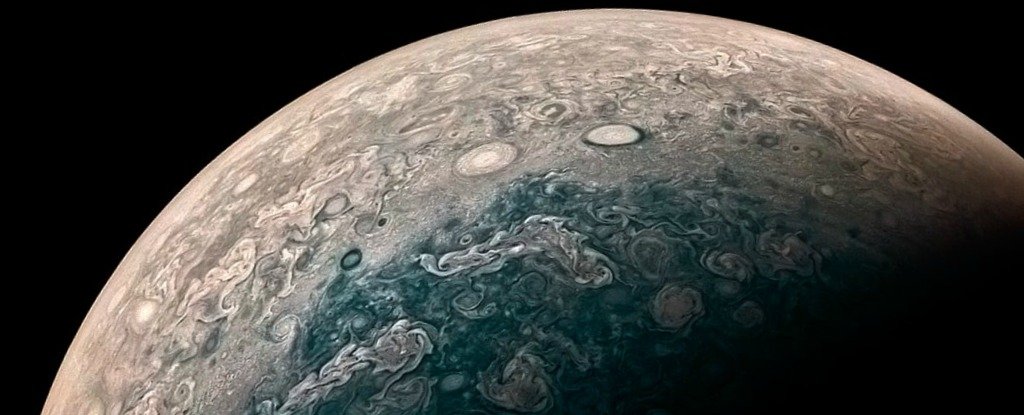A probe the size of a basketball court has taken unprecedented new images of Jupiter. NASA's US$1 billion Juno spacecraft, launched in August 2011, took five years to reach and settle into orbit around the gas giant, which is more than 415 million miles (670 kilometres) from Earth.
The probe has so far photographed Jupiter's poles for the first time, detected bizarre cloud formations, recorded mysterious auroras, and scanned deep into the planet's thick cloud tops.
Juno repeatedly swings by Jupiter in a wide arc to minimise time inside the planet's intense radiation belts, which can damage sensitive electronics.
NASA planned to fire Juno's thrusters in October to increase the frequency of these flybys - from once every 53.5 days to every two weeks - but sticky engine valves botched that operation.
So instead the maneuvers happen about once every two months.
Juno completed the fifth such maneuver on March 27, recording a fresh batch of images and streaming that raw data back to Earth - and now amateur astronomers are beginning to turn the gray, unprocessed photos into brilliant full-color images.
Here are a handful of our favorite shots from the fifth orbit, plus a few other images from previous flybys that space fans have recently uploaded to Juno's website.
This new image, processed by amateur astronomer Roman Tkachenko, shows Jupiter's north pole in all its stormy glory:

Another person processed the same raw image to show more green-coloured details:
 NASA/SwRI/MSSS
NASA/SwRI/MSSS
And here's a close-up of Jupiter's swirling cloud tops:
 NASA/SwRI/MSSS/Daiwensai-33
NASA/SwRI/MSSS/Daiwensai-33
This shot, put together by Gervasio Robles, merges three Juno flyby images to show Jupiter's elusive south pole in full view:
 NASA/SwRI/MSSS/Gervasio Robles
NASA/SwRI/MSSS/Gervasio Robles
Jason Major turned new image data into an animation that shows what it's like to zoom over Jupiter's north pole.
Amateur astronomers have also been redeveloping older Juno images. These Jovian cloud-top images all came from the probe's fourth flyby, on February 2:
 NASA/SwRI/MSSS/Uriel
NASA/SwRI/MSSS/Uriel NASA/SwRI/MSSS/Uriel
NASA/SwRI/MSSS/Uriel NASA/SwRI/MSSS/Shawn Handran
NASA/SwRI/MSSS/Shawn Handran NASA/SwRI/MSSS/Geoff Pritchard
NASA/SwRI/MSSS/Geoff Pritchard
Juno's next flyby of Jupiter should happen around May 19. But Juno won't fly forever.
NASA will plunge the spacecraft into Jupiter's clouds in 2018 or 2019.
This will prevent it from spreading any bacteria from Earth on the gas giant's icy, ocean-filled moons like Europa and Ganymede.
Source: Science Alert
Source: Science Alert

Comments
Post a Comment